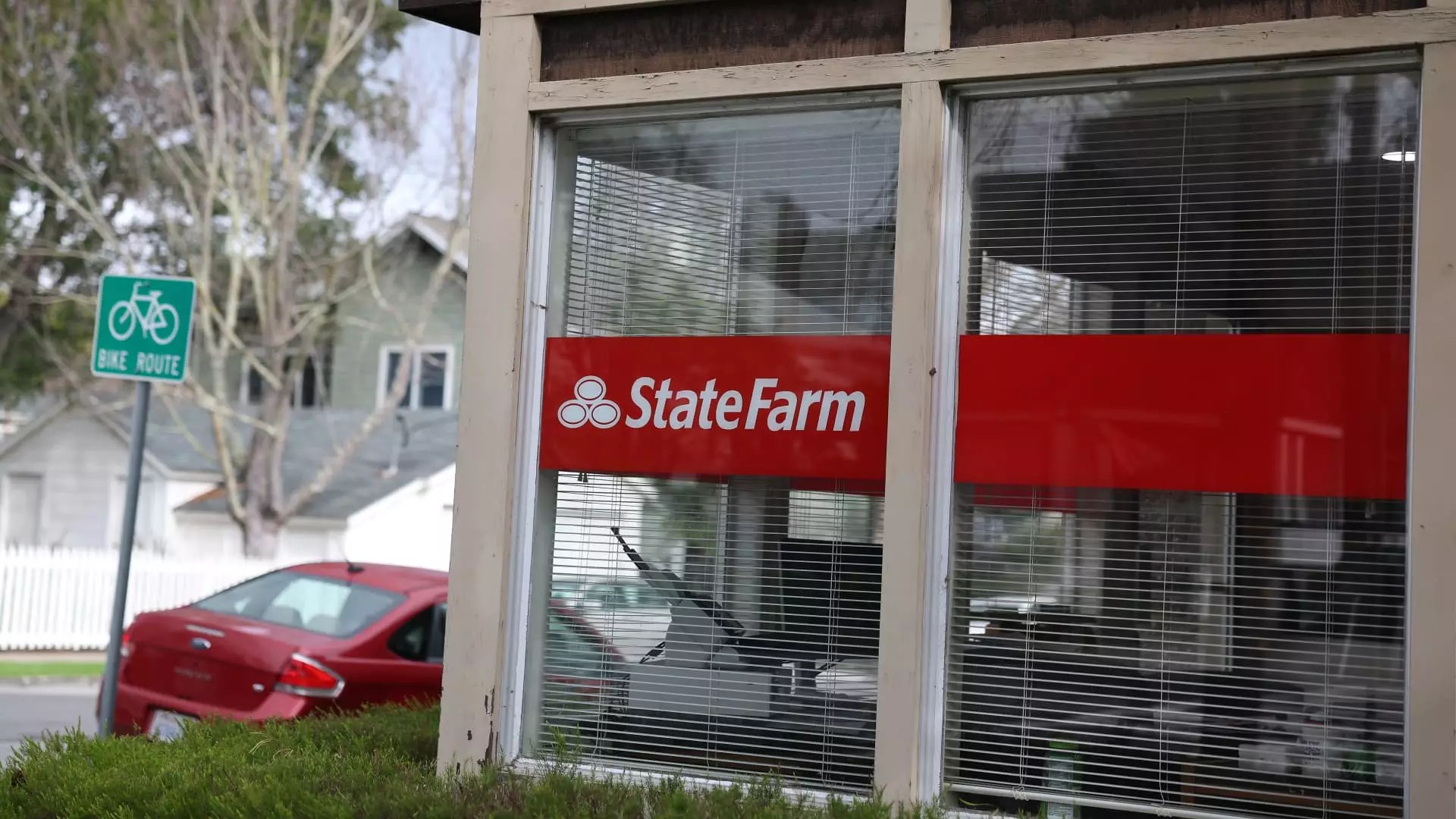As State Farm dives into a critical hearing this week to push for substantial increases in homeowner insurance rates across California, the stakes couldn’t be higher. Imagine a ship riddled with leaks, desperately seeking refuge from a tempest. This is precisely the precarious position that one of the nation’s largest insurers finds itself in as it navigates the turbulent waters of California’s insurance landscape in the wake of catastrophic wildfires. The company claims it requires this rate hike to stabilize its tumultuous finances, exacerbated by losses from the devastating wildfires in Los Angeles earlier this year. Should regulators side with the insurer, millions of Californians could be left grappling with a reality where home affordability hangs by a thread.
Then there’s the context of these wildfires. The damages incurred—an eye-watering estimated $250 to $275 billion—reflect a natural disaster of unprecedented scale, leaving an indelible mark on both individuals and the economy. This isn’t merely a financial reassessment but a stark reminder that with climate change creating new realities, our existing systems may be woefully inadequate. How did we allow our largest property insurer to get this deep into dire financial straits?
The Rate Hike Dilemma
Some might argue that a rate increase is a necessary evil, a strategic maneuver to steer State Farm away from the precipice of financial ruin. The company initially sought a 22% increase but has dialed it back to 17%, alongside a staggering 38% proposal for rental dwelling policies. This shift raises questions about the credibility of their arguments. In any consumer market, trust is integral; by changing their tune so drastically, State Farm’s intentions understandably come under scrutiny.
Critics, notably consumer advocacy organizations like Consumer Watchdog, assert that the insurance giant is crying wolf without substantial justification. Their pessimism is bolstered by a lack of consistency in the insurer’s claims. If this is truly a moment of financial existentialism, why the fluctuating requests? It begs the question: Is State Farm genuinely striving for stability or merely attempting to regain profitability at the expense of the average Californian?
Further complicating matters is the broader failure of California’s insurance model. The alarming trend of insurers—including State Farm—pulling back from writing new policies, as evidenced by their recent cessation of providing homeowners insurance in the state, demonstrates a systemic issue. The state has become a minefield for insurers, and as claims pile high amid unpredictable natural disasters, skepticism and fear pervade the conversation.
Reckoning with the Past
Moreover, the ramifications of inaction from both State Farm and local regulators could be catastrophic. With estimates suggesting that over 3 million residents currently rely on State Farm for homeowners’ insurance, equating such a shake-up with a sinking ship barely conveys how perilous this situation is. An attorney for the California Department of Insurance likened the looming crisis to the infamous Titanic. In this instance, the iceberg of financial instability is evident, but the ability to veer away is questionable. The fate of millions now rests on an administrative judge’s decision, revealing just how precarious the balance between corporate profit and public safety can be.
With discussions of a Sustainable Insurance Strategy, the state appears to be making a calculated attempt to stave off systemic collapse. Is the proposed framework enough to safeguard the thousands whose livelihoods depend on these policies? For consumers knee-deep in precarity, the time for action is not just urgent; it’s essential. Furthermore, while economic theory posits that a solvent insurer is critical for maintaining market stability, one must also consider ethical implications. Should consumer trust be sacrificed at the altar of corporate survival?
As the hearing unfolds, one can’t help but wonder if this is the beginning of a long, hard road towards reparative justice for distressed homeowners or yet another corporate bail-out masquerading as necessary reform. Given the intricate blend of human lives, economic factors, and natural unpredictability, will regulators safeguard the common interest, or will the cries for accountability get lost amid the financial noise?
With challenges stretching far beyond mere numbers and charts, the future of California’s homeowners hangs in the balance, teetering at the edge of an uncertain abyss. One thing is clear: the hard lessons of past disasters continue to echo, and we must demand more than mere platitudes from those in power.


Leave a Reply